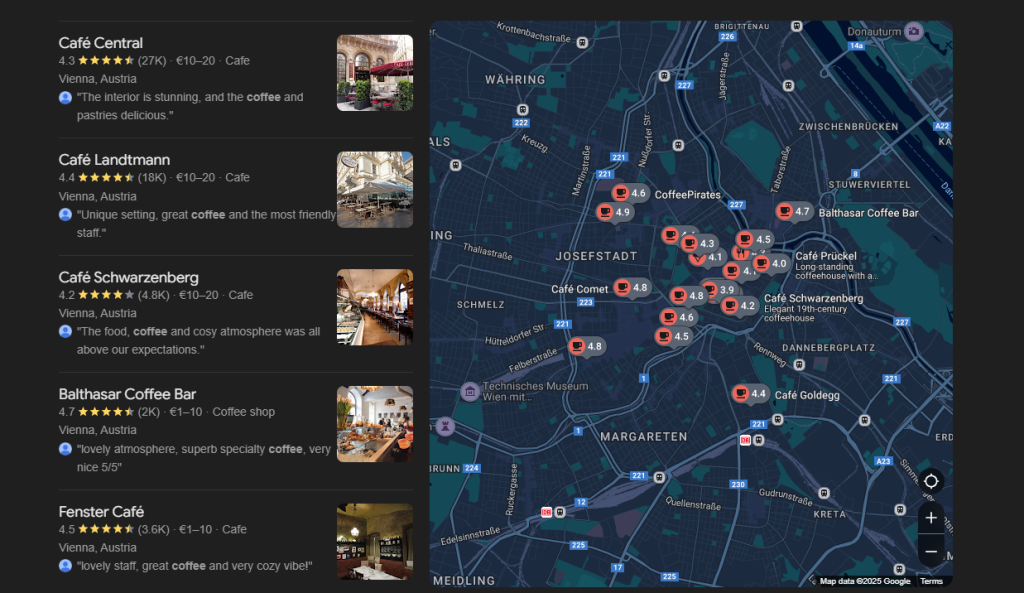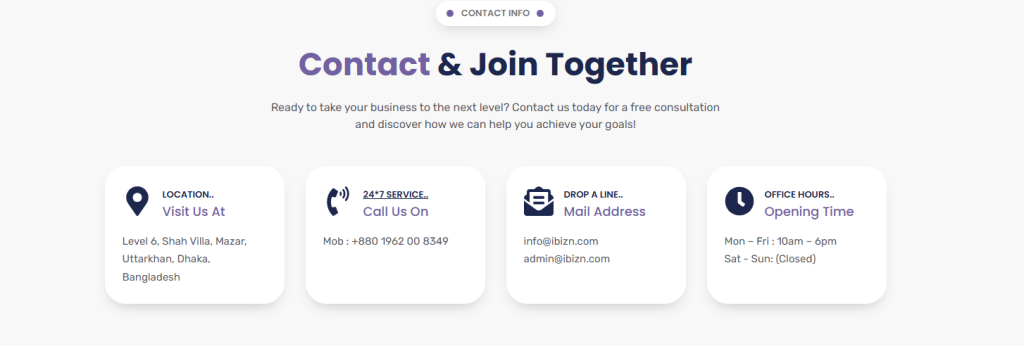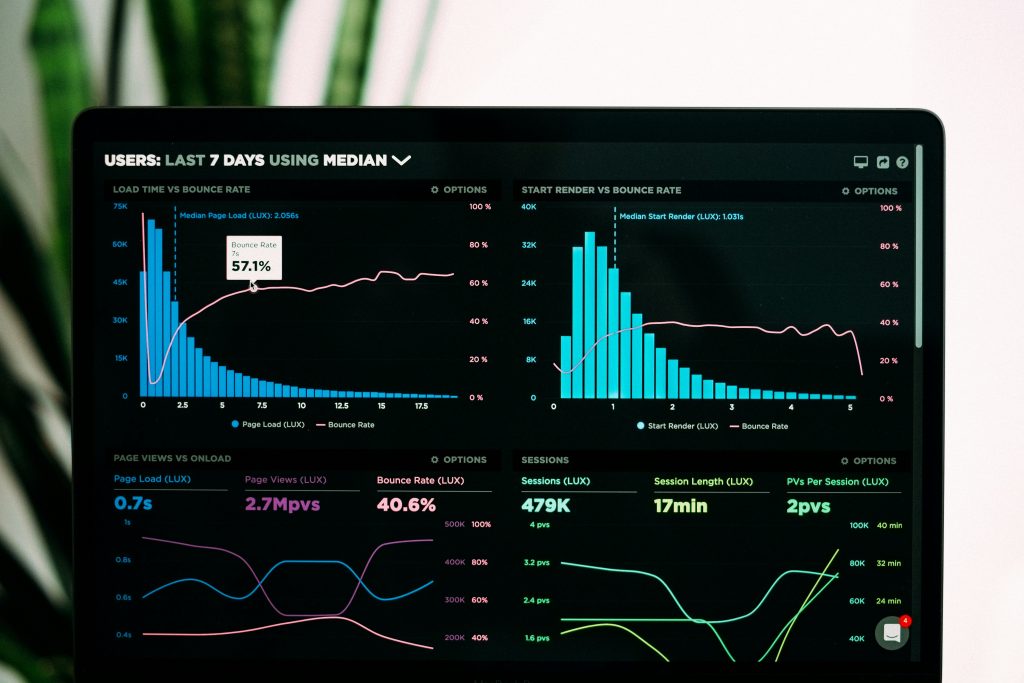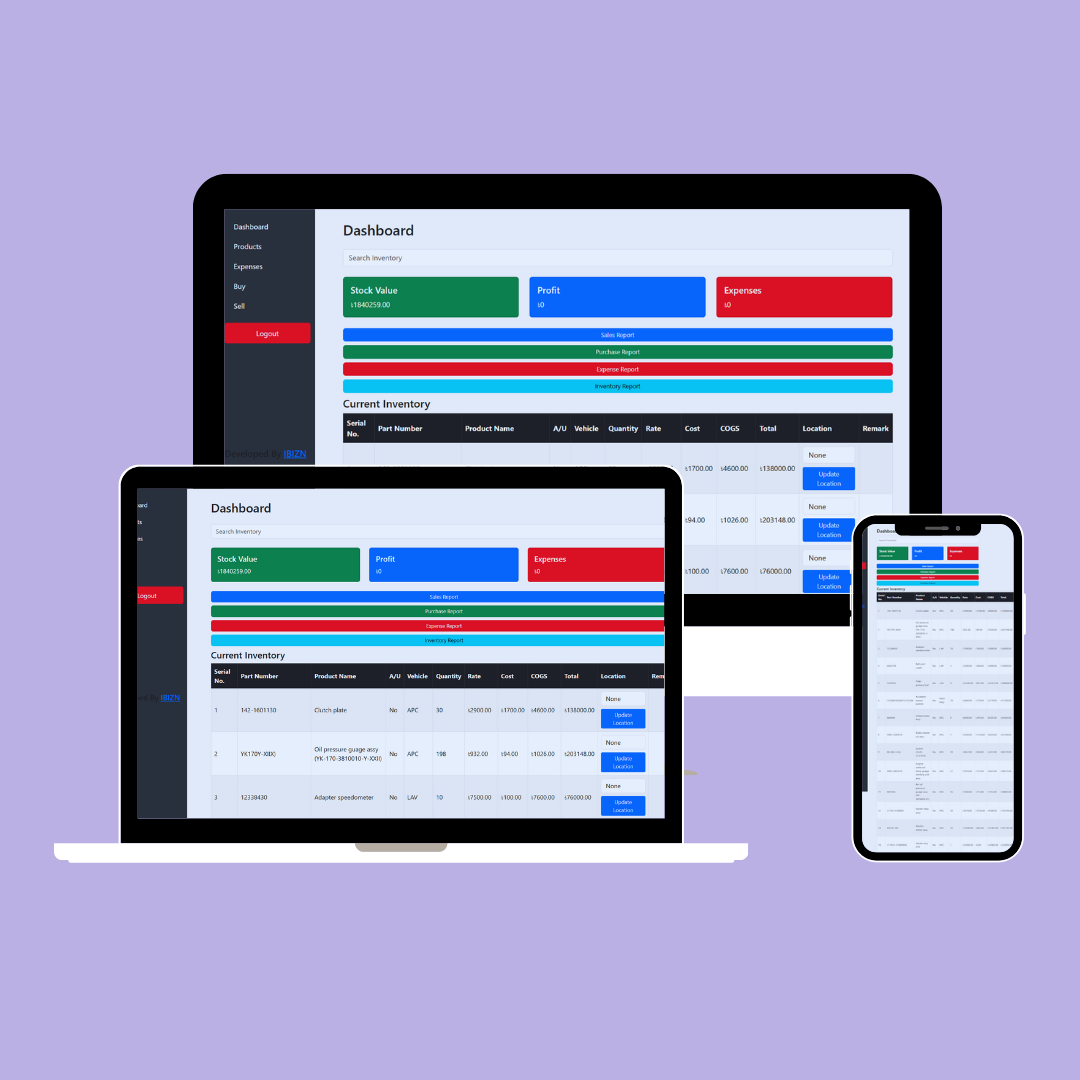Dominate Your Local Market: The Ultimate Local SEO Guide for Businesses (New & Old)
ibizncom
July 2, 2025
In today’s digital age, if your business isn’t visible online, it’s virtually invisible to potential customers right in your neighborhood. Think about it: when was the last time you looked up a service or product and didn’t start with a quick search on your phone? Whether it’s finding the best local coffee shop, a reliable plumber, or a unique boutique, local search is how customers connect with businesses.
This isn’t just about having a website; it’s about Local SEO (Search Engine Optimization) – the art and science of making sure your business shows up prominently when people in your local area are searching for what you offer.
This comprehensive guide is for everyone:
New Businesses: Just starting out and need to put your footprint on the local map? We’ll show you exactly how to build a strong local presence from scratch.
Old/Established Businesses: Already have a loyal customer base but feel like you’re missing out on online leads? We’ll guide you through optimizing your existing digital assets to capture more local traffic and boost sales.
Ready to attract more foot traffic, phone calls, and online orders from your local community? Let’s dive in!
Understanding the Local Search Landscape
Before we get into the “how,” it’s crucial to understand the “where” and “why” of local search. When someone searches for a local business, their journey often looks different from a general search.
Imagine you’re looking for a specific type of restaurant. You’d likely pull out your phone and search for “pizza near me” or “best Italian restaurant [your city name].” What you’ll often see is a blend of results:
Google Maps: The first thing often displayed, showing locations on a map.
The “Local Pack”: This is prime real estate! It’s a block of 3-4 local businesses that Google considers most relevant to your search, complete with star ratings, addresses, and sometimes even hours or photos. It appears right at the top of the search results page, even before organic website listings.

Why is this different from traditional SEO? Traditional SEO focuses on ranking high for broad keywords globally. Local SEO, however, is all about geographical relevance. Google wants to provide the most helpful, geographically relevant answer to a local query, and that’s where your local optimization efforts come into play. If you’re not optimized locally, you’re essentially invisible to the very customers who are looking for you right down the street.
Essential Pillars of Local SEO: Your Foundation for Visibility
Mastering local SEO involves building a robust foundation across several key areas. Think of these as the fundamental ingredients for local success.
Pillar 1: Google Business Profile (GBP) – Your #1 Local Asset
If you take away one thing from this guide, it’s this: Your Google Business Profile is the absolute cornerstone of your local SEO strategy. It’s a free listing provided by Google that lets you manage how your business appears on Google Search and Maps.
Why it’s crucial: An optimized GBP can put your business directly into the “Local Pack” and on Google Maps, driving phone calls, website visits, and directions to your physical location. It’s often the first impression a local customer has of your business.
For New Businesses: Setting Up Your GBP
Claim Your Profile: Go to business.google.com and search for your business. If it exists, claim it. If not, create a new listing.
Verify Your Business: Google needs to confirm you’re a legitimate business at the stated address. This usually involves receiving a postcard with a verification code, a phone call, or an email. Be patient, this step is vital!
Fill Out EVERYTHING (Completely & Accurately): This is where most businesses miss opportunities.
Business Name: Your official business name.
Primary Category: This is critical. Choose the most accurate, specific category that describes your primary service (e.g., “Restaurant” not “Food,” “Plumber” not “Service”).
Additional Categories: Add up to 9 more categories that apply.
Address: Exact physical address if you have one. If you’re a service-area business without a physical storefront (like a mobile mechanic or consultant who visits clients), list your service areas instead of a public address.
Service Areas: Specify the regions/cities/neighborhoods you serve if you travel to customers.
Hours of Operation: Be precise, including special holiday hours.
Phone Number & Website: Ensure these are correct and active.
Products/Services: List all your offerings in detail. This helps Google understand exactly what you do.
Description: Write a compelling, keyword-rich overview of your business (750 characters max).
Photos & Videos: This is HUGE for engagement! Upload high-quality photos of your storefront, interior, products, team, and even videos. Businesses with photos get more clicks.
For Old Businesses: Optimizing Your Existing GBP
If you’ve had a GBP for a while, it’s time for a deep dive audit:
Check for Accuracy: Is all your NAP (Name, Address, Phone) information exactly consistent with your website and other online listings? Even small discrepancies can hurt.
Update Categories: Has your business evolved? Are your categories still the most relevant and specific?
Refresh Photos: Outdated photos? Add new, high-quality images and videos regularly. This signals activity to Google.
Utilize Posts: Treat your GBP like a mini-social media platform. Post updates about offers, events, new products, or even just general news. These appear directly in your profile and can drive engagement.
Monitor Q&A: Anyone can ask a question on your GBP. Make sure you’re answering promptly, and proactively add frequently asked questions yourself.

Pillar 2: Local Citations (Consistency is Key!)
A “local citation” is any online mention of your business’s Name, Address, and Phone number (NAP). These can be on business directories, social media profiles, or other websites.
Why they matter: Google uses citations to verify your business’s existence and legitimacy. The more consistent your NAP information is across the web, the more trustworthy your business appears to search engines, which can boost your local ranking. Inconsistencies (e.g., “St.” vs. “Street” or different phone numbers) can confuse search engines and hurt your visibility.
Key Citation Sources (Globally Applicable):
Major data aggregators (often power many smaller directories globally).
Popular review sites (Yelp, TripAdvisor for hospitality, Facebook Pages).
Social media platforms (Facebook, Instagram, LinkedIn, X/Twitter).
Industry-specific directories (e.g., a national or international association’s member directory if they have a local search function).
Local chamber of commerce directories or local business association websites.
Strategies:
For New Businesses: Focus on building a strong foundation. Manually list your business on major directories and relevant industry-specific sites. Prioritize quality over quantity initially.
For Old Businesses: Conduct a “citation audit.” Use tools (some free, some paid) to find all mentions of your business online. Identify any inconsistencies, outdated information, or duplicate listings, and then diligently work to correct them. This cleanup is vital!

Pillar 3: Localized Website Content & On-Page SEO
Your website isn’t just an online brochure; it’s a powerful tool for local SEO.
Local Keyword Optimization: Integrate location-specific keywords naturally into your website content. Instead of just “best coffee shop,” use “best coffee shop in [Your City]” or “plumber in [Your Neighborhood].”
Homepage: Make sure your NAP, service areas (e.g., “Serving [Your City] and surrounding areas”), and a clear description of what you do are prominent.
About Us Page: Talk about your local roots, your connection to the community.
Service/Product Pages: Tailor content to explain how your offerings serve local needs.
Blog: Write blog posts about local events, local issues related to your industry, or “best of” lists for your area (e.g., “Top 5 Places for [Your Product/Service] in [Your City/Region],” “Guide to [Local Landmark] attractions and nearby services”).
Location-Specific Landing Pages (for businesses serving multiple areas): If you have branches or primarily serve distinct areas (e.g., one branch downtown, another in a specific suburb), consider creating dedicated landing pages for each location. Each page should have unique, helpful content relevant to that specific area, including local testimonials and specific service details for that location.
Schema Markup (LocalBusiness Schema): This is technical but highly effective. Schema markup is a type of code you add to your website that helps search engines better understand your business’s information (like opening hours, address, reviews). It helps you stand out in search results with “rich snippets.” While this often requires a developer, it’s worth the investment.
Mobile-Friendliness: Most local searches happen on mobile devices. Your website MUST be responsive and load quickly on smartphones. Google prioritizes mobile-friendly sites.

Pillar 4: Local Reviews & Reputation Management
Online reviews are your digital word-of-mouth. They are incredibly powerful for two main reasons:
Trust Signals: Customers trust reviews as much as personal recommendations. High star ratings and positive comments build immediate credibility.
Ranking Factor: Google considers the quantity, quality, and recency of your reviews when determining your local search ranking. More positive reviews can push you higher.
Strategies for Getting More Reviews:
Just Ask! The simplest method. Train your staff to politely ask satisfied customers to leave a review (e.g., “If you enjoyed your experience, we’d appreciate a quick review on Google!”).
Make it Easy:
Create a direct link to your Google Business Profile review form and share it via SMS, email, or a QR code on your premises.
Include review requests in post-service emails or on receipts.
Don’t Incentivize (for Google): Google’s guidelines prohibit offering direct incentives (e.g., discounts) for reviews. It’s better to focus on providing excellent service.
How to Respond to Reviews (Always Respond!):
Positive Reviews: Thank the customer by name, perhaps mention something specific they praised. This shows appreciation and engagement.
Negative Reviews: Respond promptly, professionally, and empathetically. Acknowledge their concern, apologize if appropriate, and offer to take the conversation offline to resolve the issue. A well-handled negative review can actually build trust!
Why Review Diversity Matters: While Google reviews are paramount, reviews on other platforms (Facebook, Yelp, TripAdvisor, industry-specific review sites) also add to your overall online reputation and signal legitimacy to Google.

Pillar 5: Local Link Building
In the world of SEO, a “link” from another website to yours is like a vote of confidence. For local SEO, these votes carry extra weight when they come from relevant local sources.
What are Local Links? These are backlinks from other websites with a local focus. Examples include:
Your local Chamber of Commerce website.
Local news websites featuring your business.
Local blogger reviews.
Partnerships with other local businesses (e.g., a coffee shop linking to a local bakery they source from).
Sponsorships of local sports teams, charities, or community events.
Why they’re important: Local links signal to Google that your business is a respected and active part of the local community, boosting your authority and local ranking.
Brainstorming Local Link Opportunities:
Community Involvement: Sponsor a local school event, charity run, or cultural festival. Get listed on their “Sponsors” page.
Local Partnerships: Collaborate with complementary local businesses.
Local Press: Reach out to local newspapers, online magazines, or community blogs with newsworthy stories about your business.
Testimonials: Offer to provide testimonials for local suppliers or partners in exchange for a mention on their site.
Advanced Local SEO Tactics: For Growth & Edge
Once you’ve nailed the foundational pillars, these tactics can give you a significant edge over competitors.
Google Business Profile Messaging: Enable and respond to messages directly through your GBP. This offers a direct communication channel for potential customers seeking quick answers.
Utilizing Local Ads (Google Ads Local Campaigns): While organic SEO is free, local Google Ads campaigns can put your business at the very top of local search results and maps, driving immediate visibility and calls, especially during peak seasons or for specific promotions.
Tracking Local SEO Performance: You can’t improve what you don’t measure!
Google Business Profile Insights: Your GBP dashboard provides invaluable data on how customers are finding you (direct searches, discovery searches), where they’re coming from, and what actions they take (calls, website visits, direction requests).
Google Analytics: Set up goals to track conversions (e.g., form submissions, phone calls from your website) that originate from local search.
Local Rank Trackers: Use specialized SEO tools to monitor your local keyword rankings and see how you compare to competitors.

Special Considerations for New vs. Old Businesses
While the core principles are the same, your starting point will dictate your initial focus.
For New Businesses:
Prioritize Foundation: Your absolute first step is to claim and fully optimize your Google Business Profile. Without it, you’re not even on the map!
Build Core Citations: Focus on getting listed accurately on the major directories.
Basic Website: Ensure your website is mobile-friendly and clearly states your NAP and services.
Early Reviews: Encourage your first satisfied customers to leave reviews; these initial reviews are gold.
Patience & Consistency: Local SEO takes time. Be consistent with your efforts.
For Old Businesses:
Comprehensive Audit: Your biggest challenge might be cleaning up existing, inconsistent data. Conduct thorough audits of your GBP and all online citations.
Fix Inconsistencies: Dedicate time to correcting any old addresses, phone numbers, or duplicate listings. This “digital cleanup” is crucial.
Content Refresh: Update your website content to be more locally focused and relevant.
Aggressively Seek Reviews: Leverage your existing customer base to actively solicit new, fresh reviews. This signals ongoing activity and customer satisfaction to Google.
Leverage Local Authority: Seek out local link-building opportunities based on your established reputation in the community.
Measuring Success: How Do You Know It’s Working?
Local SEO isn’t just about showing up; it’s about growing your business. Here’s how you’ll know your efforts are paying off:
Increased Local Search Visibility: Your business appears more frequently in the local pack and map results for relevant keywords.
More Calls, Website Visits, & Direction Requests: You’ll see these metrics increase in your Google Business Profile Insights.
Higher Local Rankings: Your business moves up the ranks for your target local keywords.
Increased Foot Traffic & Sales: Ultimately, local SEO drives real-world customer engagement and directly contributes to your bottom line.
Conclusion
Local SEO is not a one-time task; it’s an ongoing journey. But by systematically implementing the strategies outlined in this guide – from optimizing your Google Business Profile to proactively managing reviews and building local links – you can significantly boost your visibility, attract more local customers, and drive tangible growth for your business, whether you’re just starting out or looking to revitalize an established presence.
The digital landscape is competitive, but with a focused local SEO strategy, you can ensure your business stands out where it matters most: right in your neighborhood. Start optimizing today, and watch your local sales and visibility soar!



